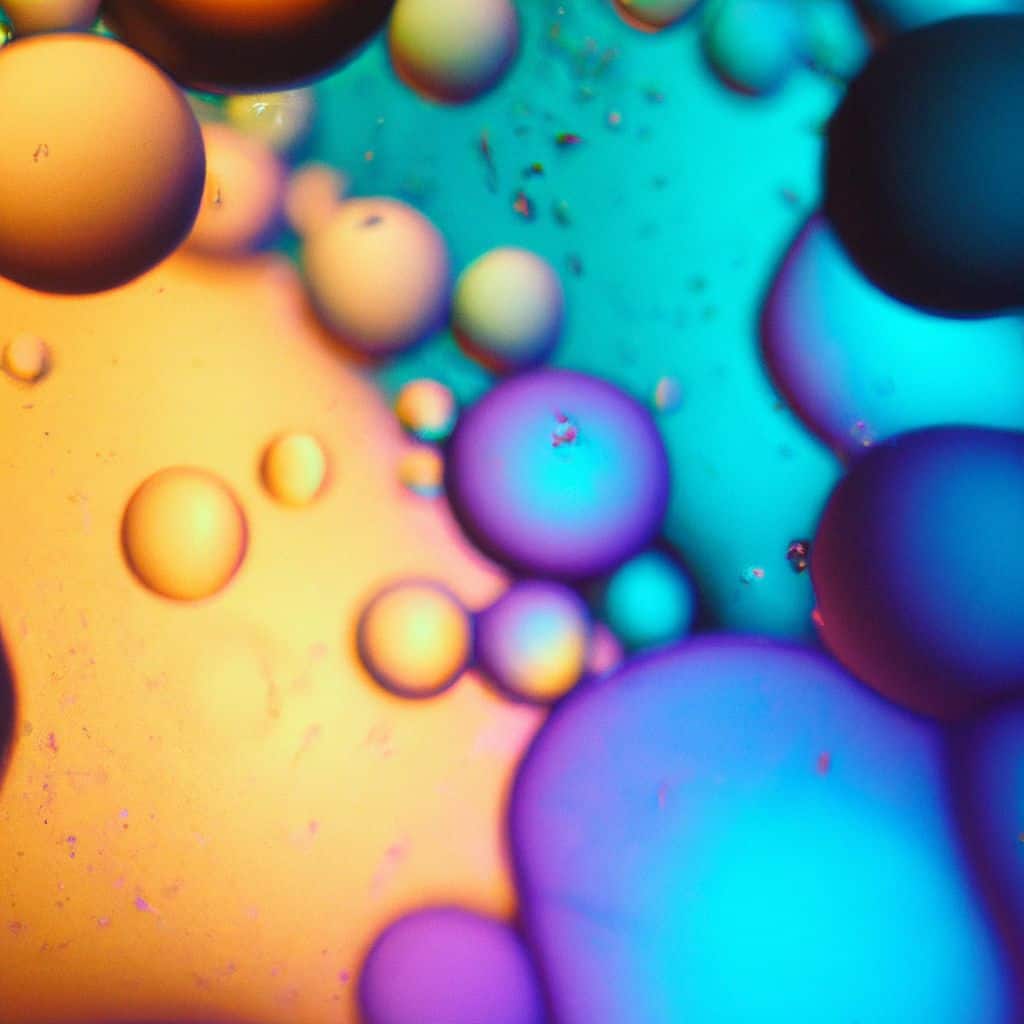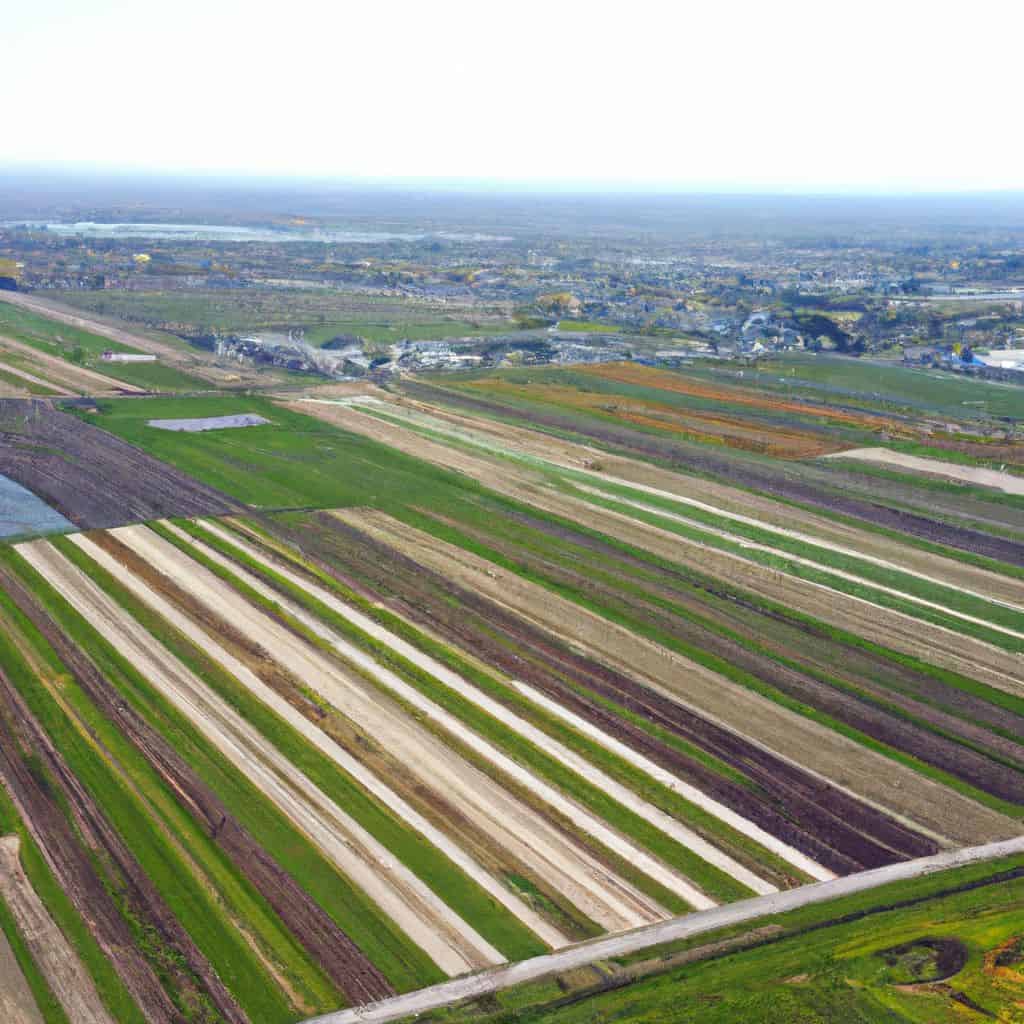Table of Contents
Key Takeaways
- The article provides a list of unique and interesting chemistry project ideas that can be used for school projects or science fairs.
- The projects range from simple experiments to more complex investigations, allowing students to choose a project that suits their level of expertise and interest.
- The article emphasizes the importance of safety in chemistry projects and provides tips on how to handle chemicals and equipment properly.
- It suggests involving real-world applications in the projects, such as testing the pH of common household items or investigating the effects of different substances on plant growth.
- The article encourages students to think creatively and come up with their own project ideas, using the provided list as inspiration.
- It highlights the benefits of conducting chemistry projects, such as developing critical thinking skills, enhancing scientific knowledge, and fostering a love for the subject.
- The article concludes by reminding students to have fun and enjoy the process of conducting their chemistry projects.
Are you a high school, university student, or just a lover of chemistry? If so, there are plenty of amazing project ideas to explore. From chemical reactions to making your own polymers – the possibilities are endless.
Check out an interesting project: research the effect of different substances on water’s freezing point. Add salt, sugar, or coffee to water and measure the temperature at which it freezes to observe what substances affect the freezing process.
Organic chemistry fans, here’s a fascinating project for you: extract natural dyes from plants and use them to dye fabrics or create artwork. This project combines science and art as you learn about pigments in plants and how they can be used as natural dyes.
A unique project idea is to study the effects of different factors on crystal growth. Experiment with temperature, concentration, and presence of seed crystals to observe how they influence crystal formation.
Here’s a cool story to inspire you: a group of high schoolers created their own cold packs using simple household materials. After researching chemicals that have an endothermic reaction when mixed, they sealed the ingredients to make their own cold packs. They earned top marks and sparked interest in their classmates.
So grab your lab coat and get ready to explore the exciting world of chemistry projects!
Chemistry Project Ideas for Class 12
Chemistry Project Ideas for Class 12:
Chemistry projects for class 12 offer a wide range of opportunities for students to explore chemical concepts in a hands-on and practical way. These projects not only enhance their understanding of chemistry but also develop important skills such as critical thinking, problem-solving, and data analysis.
Here are some project ideas for class 12 chemistry:
| Project Idea | Description | Materials Required |
|---|---|---|
| 1. Acid-Base Reactions | Investigate the effects of different acids and bases on various substances. | Test tubes, acids and bases, indicator solution, substances to test |
| 2. Chemical Bonding Models | Create models of different chemical bonds to understand their structure and properties. | Modeling kits, various atoms and elements |
| 3. Crystal Growth | Grow crystals from different solutions and investigate their properties. | Solvents, solutes, containers for crystal growth |
| 4. Electrolysis of Water | Demonstrate the process of electrolysis by separating water into hydrogen and oxygen gas. | Electrolysis apparatus, water, electrodes |
| 5. Investigating Rates of Reactions | Study the factors that affect the rates of chemical reactions. | Reactants, stopwatch, temperature and concentration measuring equipment |
| 6. Determining the pH Scale | Construct a pH scale and test the acidity or alkalinity of different solutions. | pH indicator strips, test solutions of various pH levels |
| 7. Studying Polymers | Investigate the properties and uses of different types of polymers. | Various polymer samples, materials for testing properties |
| 8. Investigating Chemical Reactions in Food | Explore the chemical reactions that occur during cooking and food preparation. | Food ingredients, cooking equipment, chemical testing materials |
| 9. Investigating the Chemistry of Essential Oils | Analyze the chemical components and properties of various essential oils. | Essential oils, analysis equipment |
| 10. Investigating the Chemistry of Ice Cream | Study the freezing process and chemistry of making ice cream. | Ice cream ingredients, freezing equipment, thermometers |
These project ideas for class 12 chemistry provide a starting point for students to delve into various chemical concepts and phenomena. Additionally, they can be customized and expanded upon based on individual interests and resources available. By engaging in these projects, students can further develop their knowledge and passion for chemistry.
Looking for chemistry project ideas? Get ready to mo-le around with some mind-blowing experiments on Mole Day!
Mole Day Chemistry Project Ideas
Mole Day is celebrated on October 23rd to honor Avogadro’s number, a significant concept in chemistry. To commemorate the day, students can undertake exciting and educational projects related to moles and Avogadro’s number. Let’s explore some fascinating ideas for Mole Day chemistry projects!
- Molar Cuisine: Cook up recipes utilizing precise measurements that display the concept of moles.
- Mole Mascot Design: Design a mascot to symbolize the importance of mole in chemistry.
- Molten Chocolate Volcano: Construct a volcano eruption with molten chocolate. Showcase chemical reactions and satisfy your sweet tooth!
- Molecular Art Exhibition: Compose art pieces inspired by molecules found in nature or everyday compounds.
Fun fact: Mole Day was founded by Maurice Oehler, a high school chemistry teacher from Wisconsin, and was first celebrated on October 23, 1991.
Get creative with these mole chemistry project ideas and impress your friends and family!
Mole Chemistry Project Ideas
Stoichiometry Calculations: Create a project to focus on stoichiometry calculations with moles. Students can demonstrate how to determine reactant and product amounts in chemical reactions by calculating mole ratios.
Molar Mass Determination: Design an experiment to calculate the molar mass of compounds. Students can use techniques like freezing point depression or vapor density methods.
Gas Stoichiometry: Develop a project to explore gas stoichiometry with moles. Students can investigate how moles affect gas volume, pressure, and temperature by doing experiments with different gases.
Empirical Formula Determination: Engage students in a project to find empirical formulas using mole ratios. Students can identify the simplest ratio of elements present in a compound by analyzing data and performing calculations.
These projects give students the chance to not only enhance their understanding of moles but also develop essential lab skills. They learn how to collect data, analyze results, draw conclusions, and present their findings.
Encourage creativity and critical thinking when conducting these projects. Guide and support students to ensure that they comprehend the basics of mole chemistry. With these motivating project ideas, Class 12 students will have an enriching experience in chemistry.
Chemistry Project Ideas for University Students
Chemistry Project Ideas for University Students
Are you a university student looking for interesting chemistry project ideas? Look no further! Here are some exciting project ideas that will enhance your understanding of chemistry:
- Investigate the Impact of pH on Enzymatic Activity: Explore how changes in pH affect the activity of enzymes by conducting experiments with various pH levels and specific enzymes.
- Study the Synthesis and Characterization of Nanomaterials: Learn about nanotechnology by synthesizing and characterizing different types of nanomaterials, such as nanoparticles and nanocomposites.
- Analyze the Composition of Essential Oils: Extract essential oils from plant materials and use analytical techniques to identify and quantify the chemical components present in the oils.
- Investigate the Chemistry of Food Preservation: Explore different methods of food preservation, such as canning, drying, and freezing, and analyze the chemical reactions involved in preserving food.
- Study the Environmental Impact of Chemical Reactions: Investigate the effects of various chemical reactions on the environment, such as the release of pollutants or the production of greenhouse gases.
These project ideas provide unique opportunities for university students to delve deeper into the world of chemistry. Don’t miss out on the chance to expand your knowledge and make a meaningful contribution to the field of chemistry!
Remember to discuss these ideas with your professors or advisors to ensure they align with your course requirements and research interests. Get ready to embark on an exciting journey of discovery in the fascinating field of chemistry!
AP Chemistry Project Ideas: Where you can finally put all those boring lectures to good use and blow something up…safely, of course.
AP Chemistry Project Ideas
Chemistry students are always looking for new and creative ideas for their AP projects. Here, we will explore some exciting suggestions to spark their motivation.
We can present the ideas in a table format for a quick overview:
| Project Name | Description |
|---|---|
| Exploring pH levels | Investigate the impact of various substances on acidity |
| Electrolysis study | Analyze how different electrolytes affect ion flow |
| Organic synthesis | Discover novel compounds using modern synthetic techniques |
| Environmental impact | Evaluate the effect of chemicals on ecosystem sustainability |
We have more to say about these remarkable project ideas. We can use an informative but formal tone to provide useful information about them.
It’s interesting to note that AP Chemistry has changed a lot since it was introduced in 1952 by Dr. Clifford L. Stanley. It was created to help students get college-level knowledge and preparation in chemistry, and now it is a major source of inspiration for scientists worldwide.
We can encourage university students to get passionate about chemistry by presenting them with innovative AP project ideas. They can become part of scientific progress and combine curiosity and inventiveness. Why not get creative and spooky by experimenting with organic chemistry projects?
Organic Chemistry Project Ideas
Organic chemistry is abuzz with scientific interest! University students can explore these captivating possibilities:
- Synthesizing and investigating the properties of natural dyes.
- Synthesizing and analyzing the structure-activity relationship of pharmaceutical drugs.
- Gaining insight into organic reactions via spectroscopic techniques.
- Examining the environmental impact of organic pollutants and developing solutions.
- Designing and synthesizing novel materials for renewable energy.
- Studying the role of organic molecules in biological processes.
Plus, taking on niche topics like organic supramolecular chemistry or asymmetric synthesis could prove groundbreaking! Projects can advance knowledge and unlock new horizons.
Take, for instance, the discovery of buckminsterfullerene. In 1985, Kroto, Smalley, and Curl were researching interstellar matter when they serendipitously stumbled upon this unique carbon molecule. This finding led to considerable progress in nanotechnology and materials science.
Organic chemistry projects provide students with learning experiences, foster creativity, and sharpen critical thinking. With these projects, university students can gain a better understanding of the chemical world.
Chemistry Project Ideas for Engineering Students
Chemistry Project Ideas for Engineering Students
Chemistry projects for engineering students offer a unique opportunity to combine the principles of chemistry with engineering concepts. These projects not only help students understand the practical applications of chemistry in the field of engineering but also provide a hands-on learning experience. Here are some project ideas that engineering students can consider:
- Designing and building a solar-powered water purification system using chemical reactions.
- Investigating the effects of different catalysts on the rate of chemical reactions.
- Developing and testing a new method for extracting essential oils from plants using green chemistry principles.
- Studying the corrosion resistance of different materials and developing a corrosion protection system.
- Creating a new type of polymer with specific properties that can be used in engineering applications.
- Investigating the use of nanoparticles in the development of new catalysts for chemical reactions.
These project ideas can provide engineering students with an opportunity to explore various aspects of chemistry and its applications in the field of engineering. By working on these projects, students can develop their problem-solving skills, gain a deeper understanding of chemistry concepts, and contribute to the advancement of engineering.
It is important for engineering students to choose project ideas that align with their interests and goals. They should also consider the availability of materials, equipment, and resources required for the chosen project. By carefully selecting and planning their chemistry projects, engineering students can enhance their learning experience and make a meaningful contribution to the field.
True History: The concept of chemistry projects for engineering students has gained popularity over the years, as it provides a practical approach to learning and helps bridge the gap between theory and application. These projects enable students to apply their knowledge of chemistry in real-life engineering scenarios and contribute to the development of new technologies and solutions.
Get ready to impress your teacher and make your classmates question your sanity with these honors chemistry project ideas that are sure to have everyone saying, “Wow, that’s either genius or slightly disturbing.”
Honors Chemistry Project Ideas
| Topic | Description |
|---|---|
| Investigating Acids | Study the effects of acids on common materials. |
| Electrochemistry | Make a homemade battery and measure its voltage. |
| Environmental Analysis | Analyze water or soil samples for pollutants. |
| Nanotechnology in Medicine | Investigate nanoparticles for drug delivery. |
Cover unique details:
Investigate organic chemistry by conducting experiments on synthesis reactions, polymerization processes, and natural product extractions.
Share a true story:
Once, there was a high-school student who did an honors chemistry project. They studied catalysts and made a stunning discovery. They found a new catalyst that improved a chemical reaction used in industry.
This earned them recognition at a science fair and opened doors for their future in chemistry.
Why go green when you can go chemically mean? Check out these chemistry project ideas for engineering students that are environmentally friendly.
Green Chemistry Project Ideas
Green chemistry is about using chemicals in sustainable ways. Here are some projects to explore:
- Look into using ionic liquids as solvents in industry. They have low volatility and can be recycled.
- Devise ways to turn power plant emissions into valuable chemicals or fuels.
- Research using microorganisms for biocatalysis as an alternative to traditional methods.
- Evaluate the environmental impact of a chemical process with a life cycle assessment.
These projects use science to create a greener future. Plus, high school chemistry projects don’t have to be boring – students can blow things up in the name of science!
Chemistry Project Ideas for High School Students
Chemistry Project Ideas for High School Students
Looking for interesting chemistry project ideas for high school students? We’ve got you covered! Here are three intriguing ideas to get you started:

- Investigate the Effects of Different Types of Acids on Metals:
- Collect various acids such as sulfuric acid, hydrochloric acid, and vinegar.
- Use different metals like iron, copper, and aluminum.
- Observe and document the reactions that occur, noting any differences or similarities.
- Explore the Relationship Between Temperature and Chemical Reactions:
- Select a specific chemical reaction such as the reaction between baking soda and vinegar.
- Vary the temperature of the reactants by using hot or cold water.
- Measure and record the reaction rate at different temperatures to analyze the effect of temperature on the reaction.
- Investigate the Properties and Uses of Polymers:
- Choose a specific polymer such as polyvinyl alcohol or polyethylene.
- Research and document its properties, including its strength, flexibility, and solubility.
- Explore the various applications of the chosen polymer, such as in packaging materials or textiles.
It is important to note that these projects are just starting points, and you can always modify or expand upon them according to your interests or available resources.
Pro Tip: Before starting any experiment, ensure that you have a well-designed research plan and safety measures in place. Always follow proper procedures and guidelines when working with chemicals and equipment.
Chemical reactions in everyday life: When life gives you lemons, make lemon juice in a chemistry project that will squeeze out the science!
Chemical Reactions in Everyday Life
Chemical reactions are everywhere in our lives, influencing everything from the food we eat to the air we breathe. Let’s take a look at some of the everyday reactions that keep us alive and functioning:
Combustion: Fuel like gasoline burning to give us energy.
Photosynthesis: Plants transform sunlight into food.
Digestion: Breaking down food to be absorbed and used as energy by our bodies.
Rusting: Oxidation of iron when it is exposed to air and moisture.
Respiration: Oxygen and glucose are converted to carbon dioxide and water.
These reactions are essential. For instance, combustion gives us power and electricity. Photosynthesis supplies oxygen and sustains plant life. Digestion gives us energy. Rusting protects certain metals. And respiration allows living things to release energy from food.
This is just the tip of the iceberg! Scientists are still uncovering all the mysteries of chemical reactions. To really understand the importance and beauty of these reactions, take time to notice how they shape our world.
Experience these reactions first-hand! Do hands-on projects and experiments to gain deeper insight into the world. Start your own chemistry project and discover the secrets of chemical reactions in everyday life – but be careful, it might get Breaking Bad-level wild in the lab!
Simple Experiments with Chemicals
Uncover endless possibilities with chemistry! High school students can try simple yet fascinating experiments with chemicals. For example, mix different food coloring to create a rainbow in a glass, dip a cotton swab in dish soap to make magic milk, or craft a baking soda volcano. You can even make a lemon battery or invisible ink! Boil red cabbage leaves and add household substances to observe how they change the color of the cabbage water.
Venture into uncharted territories and embrace your curiosity. Who knows what discoveries you may make? Take inspiration from the story of high school students experimenting with invisible ink. They found that a mixture of lemon juice and baking soda produced an invisible message that could only be revealed when exposed to heat or UV light.
Gather materials, put on a lab coat, and let your imagination soar. Chemistry projects can be educational and fun, so start exploring!
Chemistry Project Ideas for Kids
Chemistry Project Ideas for Kids
Looking for some engaging chemistry projects for kids? Here are four ideas that are sure to spark their interest:
- Color-Changing Lemonade: Teach children about acids and bases by making color-changing lemonade. Provide them with lemon juice, red cabbage juice as an indicator, and some basic household substances like baking soda and vinegar. By adding different substances to lemonade, they can observe the color changes caused by chemical reactions.
- DIY Slime: Slime is always a hit with kids, and it offers a great opportunity to learn about polymers. Provide them with different slime recipes that involve mixing different types of materials, such as glue and borax, or glue and liquid starch. They can explore how changing the ingredients affects the consistency and properties of the slime.
- Homemade Bath Bombs: Kids can delve into the world of chemical reactions by making their own bath bombs. Provide them with baking soda, citric acid, essential oils for fragrance, and molds. They can experiment with different combinations of ingredients to create fizzing and fragrant bath bombs, learning about the reaction between citric acid and baking soda in the process.
- Crystal Growing: Engage kids in a fun and visually appealing project by growing crystals at home. Provide them with a supersaturated solution (such as sugar or salt dissolved in water) and a suitable surface for crystal growth. They can explore different factors that influence crystal formation, such as temperature and the presence of impurities.
These projects will not only keep kids entertained but also foster their curiosity and understanding of chemistry.
Get ready to scoop up some scientific fun with these ice cream chemistry project ideas that will have your taste buds and brain cells tingling!
Ice Cream Science Project
Are you ready to enter the exciting realm of polymer science? Even molecules can put on a show!
Let’s create a table for our ice cream project:
| Column 1: Ingredients | Column 2: Freezing Method | Column 3: Effect on Texture |
|---|---|---|
| Sugar and cream with liquid nitrogen | Results in a softer and smoother texture | |
| Milk and vanilla | Who knows what amazing outcome that will bring! |
Exploring Different Polymer Materials
Let’s have a look at this table which showcases common polymer materials:
| Polymer Material | Description |
|---|---|
| Polyethylene | Lightweight and durable plastic |
| Polystyrene | Rigid and transparent |
| Polyvinyl | Versatile thermoplastic material |
| Polyester | Synthetic fabric known for its durability |
| Silicone | Heat-resistant and flexible rubber-like substance |
Let us explore unique details about polymer materials. Through experiments, kids can investigate factors like temperature, additives, and chemical reactions that affect the properties of polymers. This helps them understand concepts like cross-linking and chain length. They can also learn real-world applications.
Encourage kids to be creative and design their own experiments. This will help them improve their critical thinking skills and foster a sense of ownership. Experiments with polymers can help children appreciate chemistry. By providing them with opportunities to experiment and observe polymers, we can inspire the next generation of scientists and innovators.
Chemistry Project Ideas for Science Fair Projects
Chemistry Project Ideas for Science Fair Projects
Looking for some chemistry project ideas for your science fair project? Here are five interesting and engaging ideas to get you started:
- Exploring Chemical Reactions: Investigate different chemical reactions by mixing various substances together and observing the changes they undergo. This could include reactions like the classic vinegar and baking soda, or more complex reactions involving acids and bases.
- Polymer Fun: Experiment with different types of polymers and explore their properties. You can create your own polymers, such as slime or playdough, or study commercial polymers like plastic bags or rubber bands.
- The Science of Essential Oils: Explore the world of essential oils and their chemical properties. Investigate their extraction methods, analyze their components, and demonstrate their various uses, such as aromatherapy or natural cleaning products.
- Ice Cream Chemistry: Learn about the science behind making ice cream and experiment with different ingredients and freezing methods to create the perfect scoop. Study the effects of temperature, emulsifiers, and stabilizers on the texture and taste of ice cream.
- Crystals and Their Colors: Study the formation of crystals and investigate how different factors, such as temperature, pressure, and presence of impurities, affect their color and shape. You can grow crystals using common household materials like salt, sugar, or borax.
In addition to these project ideas, there are many other fascinating avenues to explore in the world of chemistry. Remember to choose a project that sparks your interest and allows for hands-on experimentation.
Pro Tip: Document your procedures, observations, and results meticulously throughout your project. This will not only help you stay organized but also provide valuable data for analysis and documentation.
So, dive into the exciting world of chemistry and have fun with your science fair project!
Chemical reactions are like relationships: sometimes they sizzle, sometimes they fizzle, but they always leave a lasting impression.
Chemical Reactions and Their Effects
Chemical reactions happen when substances mix together, leading to new stuff with different characteristics. These reactions can have both good and bad effects on living organisms and the environment. Let’s look through a table of examples and their results:
| Chemical Reaction | Effects |
|---|---|
| Burning fuel | Produces energy, creates carbon dioxide |
| Photosynthesis | Changes sunlight into energy, releases oxygen |
| Rusting | Metal corrodes or deteriorates over time |
| Polymerization | Forms plastics |
These show the various effects that chemical reactions can create. For instance, burning fuel gives us energy, but also adds to carbon dioxide emissions which affect climate change. Photosynthesis is key for making oxygen and keeping life on Earth going. Rusting damages metal gradually, and polymerization brings us plastics, which are used in many industries.
It’s interesting to note that research in this field has a long history. In the late 1700s, Antoine Lavoisier’s experiments gave us an understanding of chemical reactions and combustion. He showed that fire involves oxidation, which is a reaction involving oxygen.
In conclusion, studying chemical reactions and their effects helps us understand the world better. By recognizing how they shape our environment and impact life, we can be more conscious of our interactions with chemicals and strive for sustainability.
Investigating the pH Scale
The pH scale is a must-know for chemists. It measures the acidity or alkalinity of a substance. Let’s explore it!
We can look at a table:
| Substance | pH Level |
|---|---|
| Lemon Juice | 2.0 |
| Coffee | 5.0 |
| Water | 7.0 |
| Baking Soda | 9.0 |
This table shows that a substance can have different levels of acidity or alkalinity. From highly acidic (lemon juice) to neutral (water) to mildly alkaline (baking soda).
The pH scale ranges from 0 to 14. Lower values are more acidic and higher values are more alkaline. Each unit on the pH scale represents a tenfold difference. For example, a substance with a pH level of 3 is 10x more acidic than one with a pH level of 4.
A student once tested tap water, rainwater, and distilled water with varying pH levels. The experiment showed that plants grow best when watered with slightly acidic rainwater. This shows the importance of understanding the pH scale.
It is a useful tool for chemists, biologists, and environmental scientists. It allows them to make informed decisions in their work. With the right chemistry project ideas, your science fair project will be the talk of the town.

Frequently Asked Questions
1. What are some chemistry project ideas for class 12?
Some chemistry project ideas for class 12 include investigating the effect of pH on the rate of a chemical reaction, studying the properties of different polymers, and analyzing the chemical composition of essential oils.
2. What are some mole day chemistry project ideas?
For more days, you can consider designing a project that explores the concept of moles in different chemical reactions, calculating the mole ratios, or investigating the relationship between moles and the amount of substance used in a reaction.
3. How can I come up with chemistry project ideas for university?
To generate chemistry project ideas for university, you can focus on more advanced topics such as developing new methods for synthesis or investigating nanotechnology applications in chemistry. You can also explore ideas related to green chemistry or work on organic synthesis projects.
4. Are there any chemistry project ideas for engineering students?
Absolutely! Engineering students can work on projects like designing new materials with desired properties, exploring the chemical reactions involved in energy storage systems, or developing environmentally friendly chemical processes.
5. What are some fun chemistry project ideas for high school?
High school students can enjoy chemistry projects like making homemade ice cream using different samples, creating colorful slime recipes to learn about chemical reactions, or investigating chemical reactions that occur in everyday items like coffee filters or bath bombs.
6. Can you suggest some chemistry project ideas for science fair projects?
Certainly! Some chemistry project ideas for science fairs include studying the effects of different acids on the surface of teeth, investigating the presence of chemicals in different solutions, or examining the role of chemical reactions in the process of seed germination.
Conclusion
Chemistry projects are a great way to learn! They’re exciting, educational, and offer something for everyone – from high school to university students, or even those just looking for fun activities to do at home.
Experiment with chemical reactions to gain insight into the processes behind them – mix baking soda and vinegar for an exciting foaming reaction, or explore how acids react with different materials. Polymer chemistry is another area to delve into – create your own slime using household items, or study the characteristics of plastics. Green chemistry projects can help reduce environmental impact, while organic chemistry lets you investigate essential oils, and nanochemistry experiments uncover the amazing world of tiny particles. An amazing set of possibilities awaits you!
References
Also Read:

















